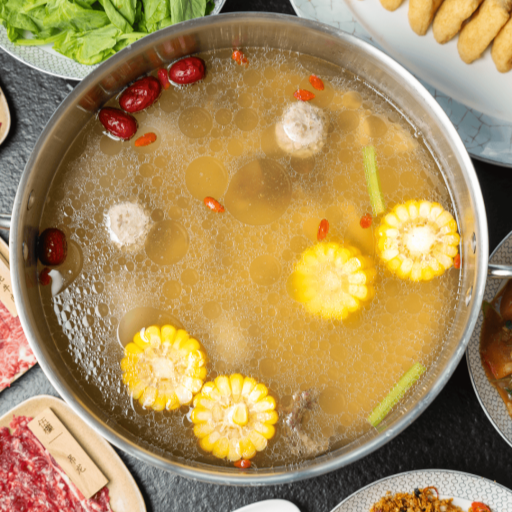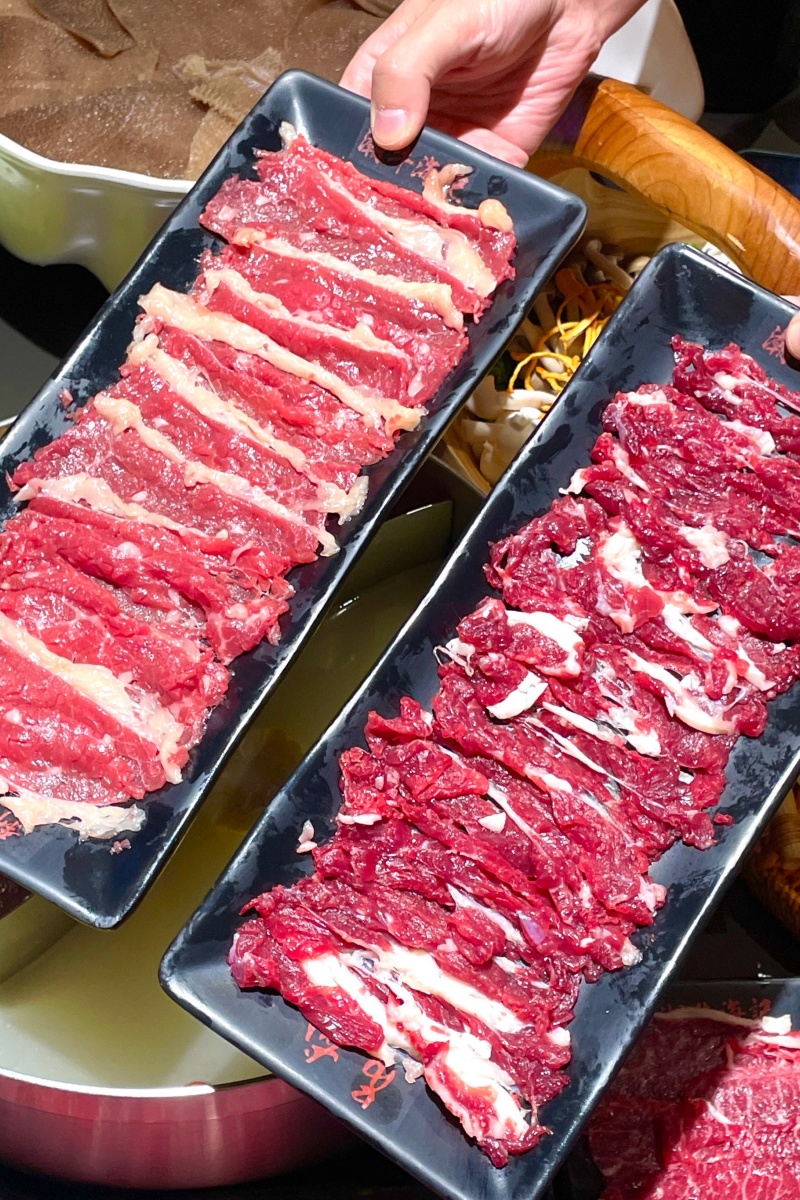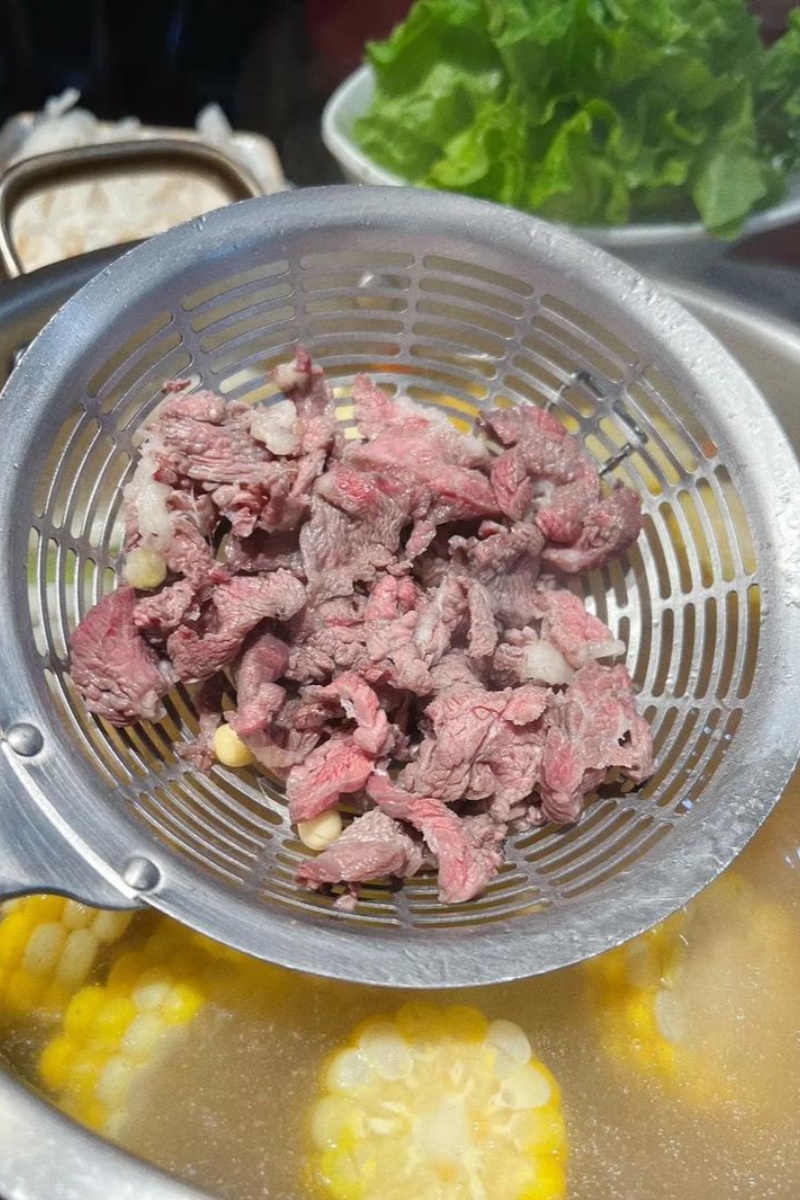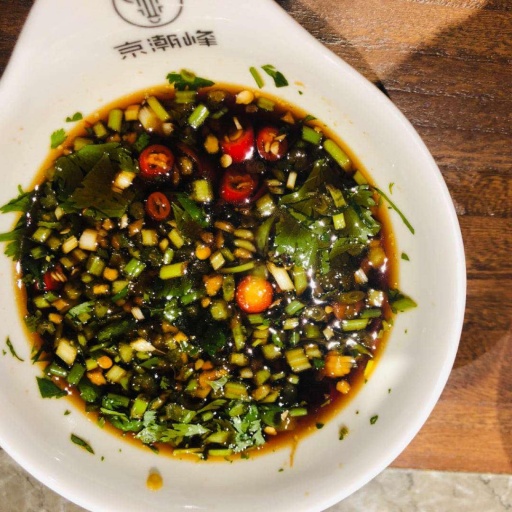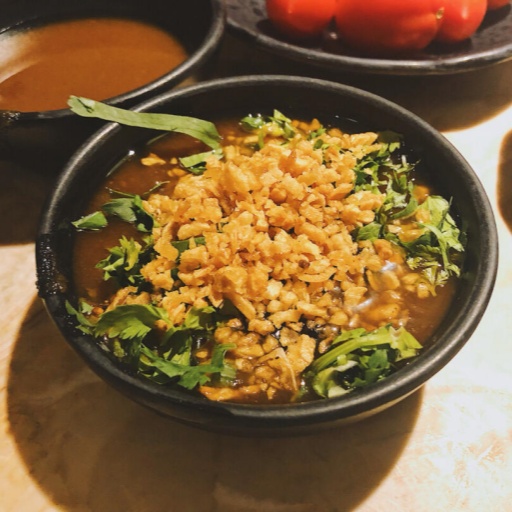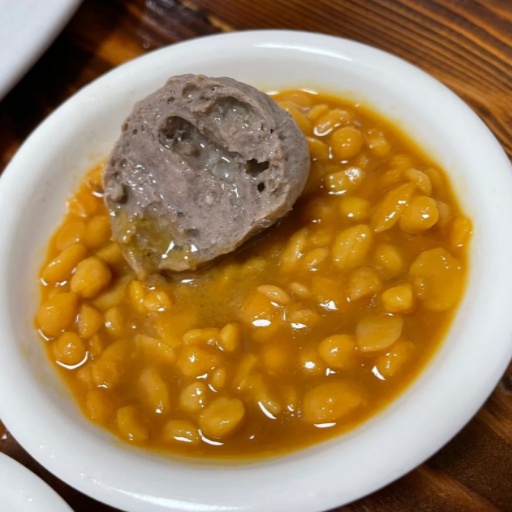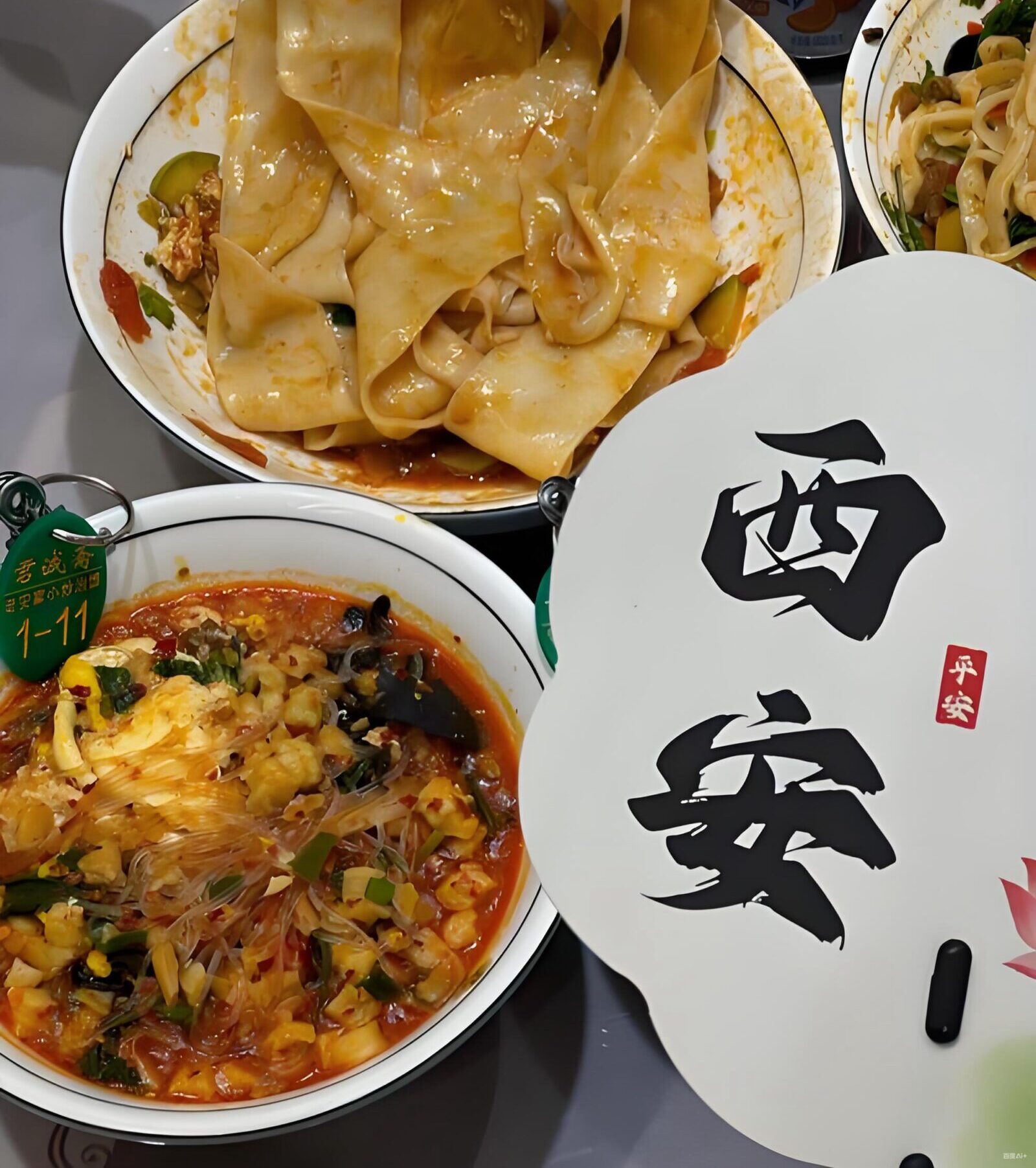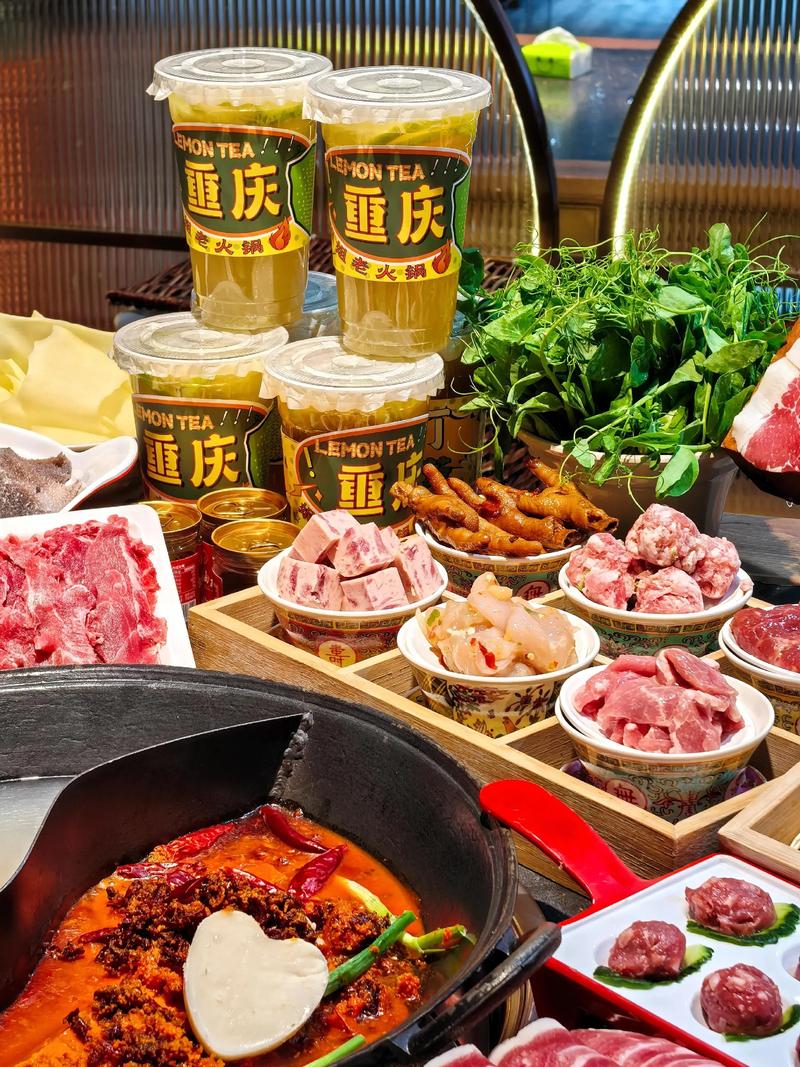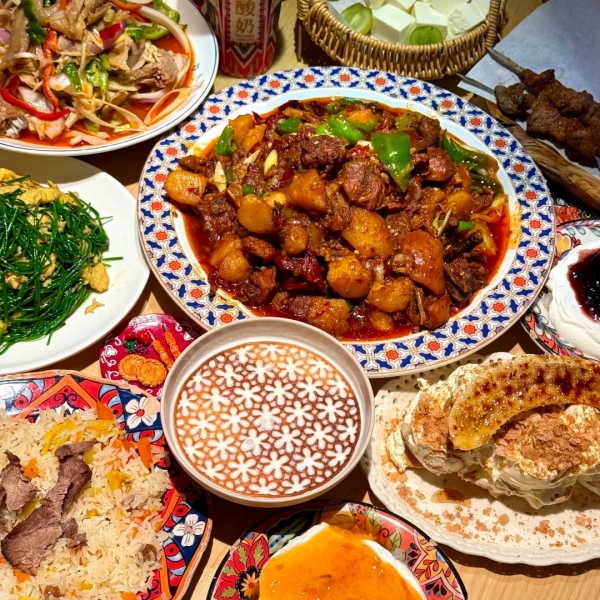When I first heard people rave about Chaoshan beef hotpot, I thought—come on, it’s just boiled beef, right? I’d had hotpot before, all the usual stuff: spicy broth, dipping sauces, meat cooked to death. So when someone told me Chaoshan hotpot was all about thin beef slices and a clear soup? Honestly, I wasn’t convinced. But the moment I tried it, everything changed. That first bite—tender, flavorful, ridiculously clean—completely shut me up. Every cut had its own vibe, from bouncy to buttery, and suddenly I was timing each piece like a ritual. This wasn't hotpot chaos—it was hotpot meditation. In this guide, I’ll walk you through the cuts, culture, and best places to try Chaoshan beef hotpot across China. Whether you're planning a trip to Shantou or just want to eat like a pro in Shanghai, this is one meal you won't want to underestimate.
What Is Chaoshan Beef Hotpot?
- Chaoshan Beef Hotpot
- Sichuan hotpot
The Cultural Roots of Chaoshan Cuisine
If you’ve never heard of Chaoshan beef hotpot, you’re not alone—but once you try it, you’ll understand why locals treat it like a ritual, not just a meal. In the Chaoshan region of eastern Guangdong, people believe that beef isn’t just meat—it’s respect. While many parts of China center hotpot around spice or seafood, Chaoshan people built an entire dining culture around finely sliced, fresh beef. It’s not just about what you eat; it’s about how, when, and with whom.
This culinary tradition dates back to the Ming and Qing dynasties, when cattle were rare and valuable. Beef was reserved for important guests or special days, sliced by hand and served in a clear, bubbling broth. Chaoshan families often treat beef hotpot like a holiday reunion dinner—slow, thoughtful, and full of meaning. No rush, no noise, just thin cuts, dipping chopsticks, and good company.
Think of it like Japan’s wagyu culture, but made for the communal Chinese table. If Sichuan hotpot is a party, Chaoshan beef hotpot is a tea ceremony. It’s calm, precise, and deeply cultural. Even today, many shops in Shantou still use ancestral cutting methods, hand-chosen cattle, and family-run broths passed down for generations. So when you sit down at a Chaoshan beef hotpot table, you’re not just eating—you’re participating in a living heritage.
What Makes Chaoshan Beef Hotpot So Special?
What makes Chaoshan beef hotpot stand out isn’t flash—it’s focus. Only local yellow cattle are used, known for lean, flavorful meat. These cattle aren’t mass-produced; the cuts are chosen carefully. Then comes the slicing. Butchers cut against the grain, following each muscle’s shape. It’s not just meat prep—it’s craft. Every slice has a purpose, every texture a role.
Famed Chinese food critic Chua Lam once said, “Chaoshan food is all about precision and respect.”
The broth? No chili oil, no spice. Just hours of simmered beef bones, clear as tea and rich in umami. You won’t need sauces—maybe just salt or scallions. Locals say, “If you need sauce, the beef isn’t good enough.” Add slow pacing, thoughtful bites, and you’ll realize this isn’t just a meal—it’s a quiet ritual in beef.
How Is It Different from Other Hotpots?
If you’ve tried hotpot in Chengdu or Beijing, you might expect Chaoshan beef hotpot to come with the same fire and oil. But nope—this style takes a totally different route. Instead of fiery broth, you get crystal-clear bone soup. Instead of bold sauces, you get natural beef flavor. It’s like comparing espresso to green tea—they serve different moods.
Unlike Sichuan hotpot, which is loud, spicy, and intense, Chaoshan hotpot is subtle and quiet. The focus is on texture. You don’t dunk veggies, tofu, or spam here. You dip specific cuts of beef for exact seconds—seven seconds for “spoon tendon,” five for “tenderloin.” Time is flavor.
Also, there’s the order of eating. In Chongqing, you can throw everything in at once. But here, you follow a sequence: tendon first, then lean, then fatty. Finish with a bowl of rice soaked in beef broth, and you’re good. That’s why Chaoshan beef hotpot often surprises first-timers—it’s not about filling up, it’s about doing it right. It’s hotpot with rules, rhythm, and respect.
What to Order for a Real Chaoshan Experience?
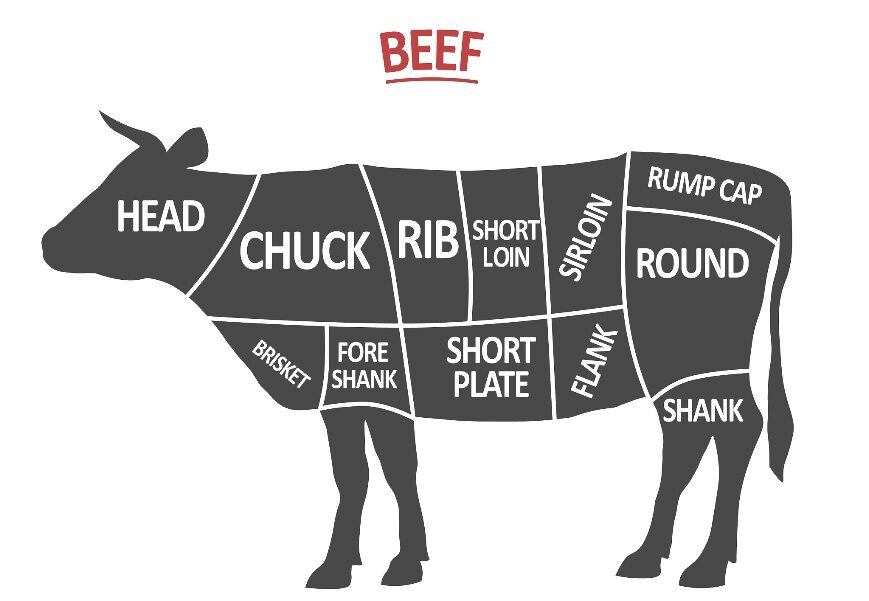
Cuts of beef
Must-Try Beef Cuts You Should Know
When you sit down at a Chaoshan beef hotpot table, don’t just say “beef.” That’s like walking into a French bakery and asking for “bread.” Chaoshan hotpot is all about specific beef cuts, each with a name, a texture, and a best timing to cook. Locals treat these slices with near-surgical respect—timing, thickness, and order matter.
Start with the most prized: 吊龙 (diào lóng), also called “hanging tender.” It’s thin but springy, perfect for a seven-second dip. Then there’s 匙柄 (spoon tendon), which is marbled and chewy—it gives that satisfying bite. Another must-try is 嫩肩肉 (tender shoulder), known for its balance of softness and flavor. It’s not about how much beef you order—it’s about how precise each bite is.
To help first-timers, here’s a simple cheat sheet:
| Cut Name (CN) | English Nickname | Texture | Dip Time |
|---|---|---|---|
| 吊龙 (Diào Lóng) | Hanging Tender | Springy | 7 seconds |
| 匙柄 (Shí Bǐng) | Spoon Tendon | Chewy-Marbled | 8 seconds |
| 嫩肩 (Nèn Jiān) | Tender Shoulder | Soft + Flavor | 5–6 seconds |
What Else to Eat Besides Beef?
While beef steals the spotlight, a real Chaoshan beef hotpot table is never just meat. Locals always add a few side kicks that balance texture, temperature, and taste. First on the list? Handmade beef balls. These aren’t your average frozen ones—they bounce. Literally. Locals say if it doesn’t bounce, don’t eat it. They’re made fresh every day from ground beef and tendon, then hand-pounded for springiness.
Next, try 炸腐皮 (crispy tofu skin). It’s light, golden, and melts a little when dipped in the broth. Paired with the rich beef slices, it adds a crunchy contrast. Also, don’t skip the greens—茼蒿 (tonghao or chrysanthemum leaves) are a local favorite. They’re mildly bitter, which cuts through the fat and refreshes your palate.
Here's a quick pairing guide:
| Side Dish | Why It Works |
|---|---|
| Beef balls | Adds bounce, tendon texture |
| Crispy tofu skin | Light, crunchy, soaks in broth well |
| Chrysanthemum greens | Bitterness balances the fat |
These aren’t filler items. In Chaoshan cuisine, balance is key. You want chewy, soft, crunchy, and clean—all in one meal. It’s like a beef-tasting orchestra where each note matters.
How to Eat Chaoshan Beef Hotpot Like a Local
- Freshly sliced beef
- Six-Second Beef
What’s the Right Way to Start?
Start with lean cuts. Locals say you should eat from “light to rich.” That means pieces like tenderloin or hanging tender come first, when your tongue is still sharp. After that, move on to slightly fattier cuts, then tendon-rich pieces. Some even say it’s rude to throw everything in at once—it’s like pouring milk into tea before the water’s hot.
There’s also the order of dipping. You don’t pile meat in the pot. It’s one piece at a time. Swish it gently, count to six, and eat. This isn’t hotpot chaos—it’s hotpot choreography. By starting this way, you respect the ingredient, the broth, and the people around you. That’s what makes chaoshan beef hotpot feel more like a tea ceremony than a feast.
The “Seconds Count” Rule: Timing Is Everything
In most hotpot places, you throw things in and wait. Not here. In chaoshan beef hotpot, every second counts—literally. If you’ve ever overcooked steak and regretted it, this rule is for you. Local diners time their beef slices by instinct or by phone stopwatch. It’s common to hear someone say, “Only six seconds for this one!”
Why so precise? Because every cut reacts differently to heat. Hanging tender stays springy at seven seconds. Spoon tendon turns chewy at ten. Tender shoulder? Overcooked after five. It's a science of seconds. That’s why many shops give you a cheat sheet—or the staff will whisper, “This one’s six.” It feels like getting tips from a sushi chef.
Ending with Soup Rice: The Final Move
Just when you think the meal’s over, the best part begins. After all the beef’s been cooked, the broth left in the pot becomes a goldmine of flavor—rich with beef oil, marrow, and essence. In Chaoshan tradition, locals never waste that. They turn it into “汤泡饭” (soup rice), a comforting end that ties the whole meal together.
Here’s how it works: scoop a small bowl of warm rice, pour the beef broth on top, and maybe add a few chopped scallions or crispy tofu skin bits. Let it sit for a minute. What you get is not congee, not soup, but something in between. It’s like a beef version of miso soup with rice, and it tastes way better than it sounds.
Signature Chaoshan Dips: Three Sauces Locals Actually Use
- Seafood Scallion Oil Dip
- Shacha Sauce Dip
- Puning Fermented Bean Sauce Dip
Seafood Scallion Oil Dip (海鲜葱油蘸料)
This light dip mixes hot scallion-infused oil with soy sauce and a splash of seafood broth. It’s fragrant, not heavy, and brings out natural beef sweetness. Locals love it with tender cuts like hanging tender (吊龙) or lean shoulder (嫩肩). The seafood note adds depth without overpowering the clean broth.
Shacha Sauce Dip (沙茶酱蘸料)
Made from peanuts, dried shrimp, garlic, and sesame oil, this thick sauce is rich and nutty. It’s best for fatty, chewy cuts like spoon tendon (匙柄) or beef balls (牛肉丸). It adds punch, but use it sparingly—too much drowns out the beef’s texture.
Puning Fermented Bean Sauce Dip (普宁豆酱蘸料)
This savory Chaoshan specialty blends yellow bean paste with garlic, chili, and a bit of vinegar. It’s salty, slightly funky, and pairs well with marbled cuts or tendon-heavy beef. Locals often dip just the tip of the slice—this sauce is strong and concentrated.
Where to Try Chaoshan Beef Hotpot?
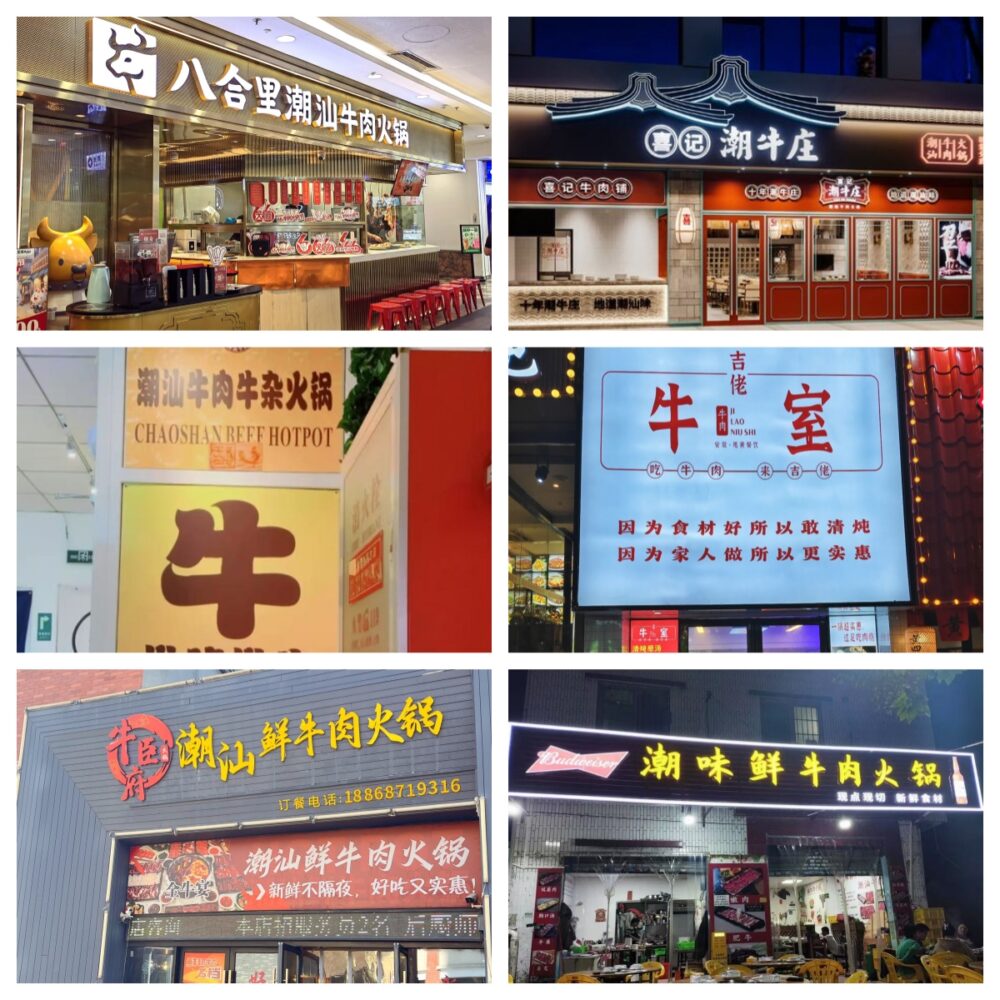
Best Restaurants in Shantou and Chaozhou
Not going to Shantou or Chaozhou? You can still get pretty authentic chaoshan beef hotpot in China’s bigger cities—just choose wisely. Some chains have brought the flavors inland, and a few independent spots are doing it with care.
八合里牛肉火锅 (Baheli Beef Hot Pot)
This is the go-to place for locals in Shantou. It has expanded across Guangdong and even reached Beijing and Shanghai, but the Shantou branch still has the best reputation. The beef is sliced right in front of you, and timing charts for each cut are provided at the table.
Address: No. 2, Jinsha East Road, Jinping District, Shantou City, Guangdong Province
Phone: 0754-88208888
Price: Approx. 90 RMB per person
老牛庄 (Lao Niu Zhuang Beef Hot Pot)
This old-school shop doesn't advertise much, but it's beloved by generations of Shantou locals. You won't find luxury decor or QR menus here—just honest beef, clean broth, and expert slicing. A real hidden gem.
Address: Lane 12, Zhongshan Road, Longhu District, Shantou City, Guangdong Province
Phone: 0754-88556799
Price: Approx. 75 RMB per person
潮味馆 (Chao Wei Guan)
This family-run restaurant in Chaozhou is known for picking fresh beef daily from the morning market. It's cozy and relaxed, great for travelers who want a sit-down meal without the tourist buzz.
Address: No. 21 Huanhua Road, Xiangqiao District, Chaozhou City, Guangdong Province
Phone: 0768-2281122
Price: Approx. 65 RMB per person
Which Big Cities Serve It Right?
Not going to Shantou or Chaozhou? You can still get pretty authentic chaoshan beef hotpot in China’s bigger cities—just choose wisely. Some chains have brought the flavors inland, and a few independent spots are doing it with care.
In Beijing, try Chao Niu Zhuang (潮牛庄) in Sanlitun. It’s popular among young locals and expats. The beef selection is impressive, and they train staff in proper slice-and-timing etiquette. In Shanghai, head to Chao Niu Dao (潮牛道)—their tender cuts and minimalist decor make it a go-to for business dinners and tourists alike. Meanwhile in Shenzhen, check out Lao Niu (佬牛火锅). Locals swear by it. The meat is fresh, and the soup never oily.
Here’s a quick guide:
| Restaurant | City | Notes |
|---|---|---|
| Chao Niu Zhuang | Beijing | Sanlitun area, foreigner-friendly |
| Chao Niu Dao | Shanghai | Sleek style, solid beef quality |
| Lao Niu Hotpot | Shenzhen | Local favorite, authentic clear broth |
Common Mistakes Tourists Make (And How to Avoid Them)
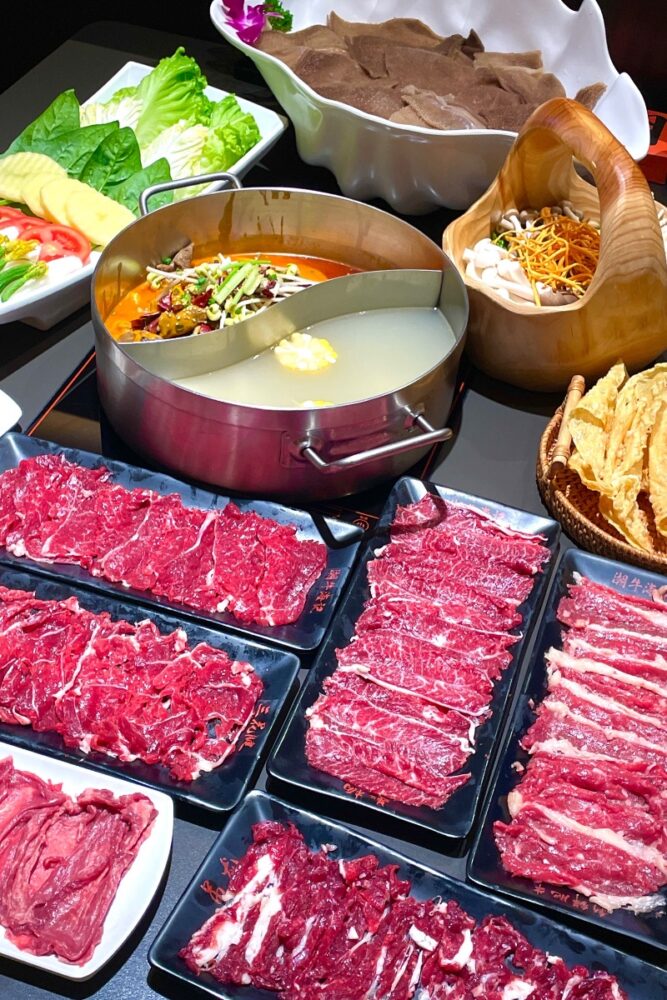
Overcooking Premium Cuts
One of the most common mistakes tourists make when eating chaoshan beef hotpot is simple—but painful: overcooking good beef. It usually comes from habit. In most Western meals, cooking meat means ensuring it’s well-done, especially for safety. But here? That instinct ruins the dish.
Chaoshan beef is sliced razor-thin for a reason. It only takes 5 to 8 seconds in the broth—any longer, and the meat turns rubbery. You’re not cooking a steak; you’re briefly waking it up in a spa bath. The best texture comes when the beef is just cooked through—pinkish inside, juicy, and still holding its original bounce.
Ordering Like It’s Sichuan Hotpot
Another big mistake? Treating chaoshan beef hotpot like Sichuan or Chongqing hotpot. That means ordering a table full of vegetables, tofu, seafood, noodles, and dipping sauces—and expecting everything to go into one spicy broth. That’s not how it works here.
In Chaoshan-style hotpot, beef is the center, not a part of the mix. The broth is clear and subtle, designed to support—not cover—the meat’s flavor. Overloading the pot with non-beef items changes the taste of the soup and throws off the balance. It's like putting ketchup on sashimi.
Also, don’t expect sauce trays. While some places offer dipping options, locals rarely use them. Why? Because if the beef is sliced and cooked right, it doesn't need anything else. Focus on getting the cuts and sequence right, not mixing sauces. That’s the essence of chaoshan beef hotpot—less is more.
Rushing Through the Meal
Modern dining habits, especially in cities, often favor speed. But chaoshan beef hotpot doesn’t play by fast-food rules. It’s a slow meal. And rushing through it—ordering all at once, dunking everything, eating fast—misses the point entirely.
Locals treat this meal as an hour-long conversation, not a 20-minute task. There’s a rhythm: you order, wait, slice, dip, eat, and pause. Each step matters. The beef is sliced fresh per order—not brought all at once. Even the broth evolves with time, deepening in flavor as cuts go in and out.
Frequently Asked Questions (FAQs)
Q: Can I eat Chaoshan beef hotpot alone, or is it only for groups?
A: You can absolutely enjoy Chaoshan beef hotpot solo. While most locals eat hotpot in groups, many shops now welcome solo diners, especially in bigger cities like Shanghai and Shenzhen. Just go during off-peak hours—around 5 PM or after 8:30 PM—so you won’t feel rushed. Ask for a small pot or "half portion" menu. Some places even offer solo beef sets that include three to four premium cuts with rice and soup. Skip ordering too much. Stick to one lean, one marbled, and one tendon cut to balance texture. Bring headphones or a book—this is a slow meal, not a quick snack. And don’t worry if people glance at you. Eating alone is becoming more common in China, especially in hotpot chains. Also, solo eating helps you focus on timing and flavor. You’ll learn fast how five seconds really makes a difference. If you’re near a chain like Baheli or Lao Niu, they’re usually friendly to solo guests. Just smile, ask for “xiao guo” (small pot), and enjoy one of the most peaceful meals you’ll have in China.
Q: Do Chaoshan beef hotpot restaurants offer anything for vegetarians?
A: Chaoshan beef hotpot is very beef-focused, but vegetarians can still enjoy a light meal. Most restaurants offer several plant-based side items. You can order chrysanthemum greens, tofu skin, mushrooms, and rice noodles. Some shops serve handmade tofu or clear herbal broths. But don’t expect full vegetarian menus. The soup base is usually beef bone unless you ask. If you're strict vegetarian, request “no beef broth” or ask for boiling water as base—some places will accommodate. You can also eat “hotpot-style” by just ordering boiled vegetables with dipping sauce. Go with a group and build your own side meal. Another option: check modern hotpot chains with mix-and-match menus. These include veggie-only pots or set combos. Also, bring your own dipping sauce if needed—many places offer garlic, sesame, and soy at self-serve bars. It won’t be a feast, but if you're flexible and plan ahead, you won’t go hungry. Just manage expectations—this is a beef temple, after all.
Q: Is it okay to ask the staff for beef recommendations?
A: Absolutely. In fact, most locals do that every time. Even regulars ask the staff which cuts are best that day. Some restaurants change their beef supply daily depending on freshness. Staff usually know which cut has the best texture or marbling. Just say “what’s good today?” and point to the meat board or fridge. If they seem confused, show photos or keywords like “吊龙” or “匙柄.” Many waiters will offer honest suggestions, not upselling. That’s part of Chaoshan dining culture—respect for ingredients. Some shops even have butcher recommendations written on the wall. So yes, ask away. It shows interest, not ignorance.
Q: What’s the best beef cut for first-timers who’ve never had it?
A: Go with tender shoulder. It’s soft, juicy, and easy to like. Hanging tender is great too—it’s a bit springier but still beginner-friendly. Spoon tendon has a chewier bite and more fat, so maybe try that later. Ask the staff to give you a mix of lean and marbled cuts. They’ll usually recommend a balanced plate. Avoid ultra-fatty or super-thin cuts your first time unless someone guides you. Don’t worry too much though. Even “safe” cuts here taste special. You’ll get the hang of timing after a few slices.
Q: What drinks go best with Chaoshan beef hotpot?
A: Most locals just drink hot tea or plain water. Why? Because strong drinks can kill the beef flavor. If you want something cold, go with unsweetened herbal tea or chrysanthemum tea. Avoid sweet sodas or heavy alcohol—they coat your tongue. Some people like a light lager beer, but only in moderation. You’re not here to drink; you’re here to taste beef. The clean broth pairs best with clean drinks. Keep it light, and you’ll taste more.
Q: How spicy is Chaoshan beef hotpot?
A: Not spicy at all—unless you add spice yourself. Chaoshan hotpot uses clear beef bone broth. There’s no chili oil, no peppercorns, no built-in heat. That’s part of the charm. You taste the beef, not the burn. If you want spice, add sliced chili or ask for a dipping sauce with heat. But it’s optional. Most locals don’t use it. This isn’t Sichuan hotpot. It’s light, clean, and balanced. Perfect if you want flavor without fire.
Want more China travel ideas? Check out our city guides on Beijing, Shanghai, Guangzhou, and Chengdu.
